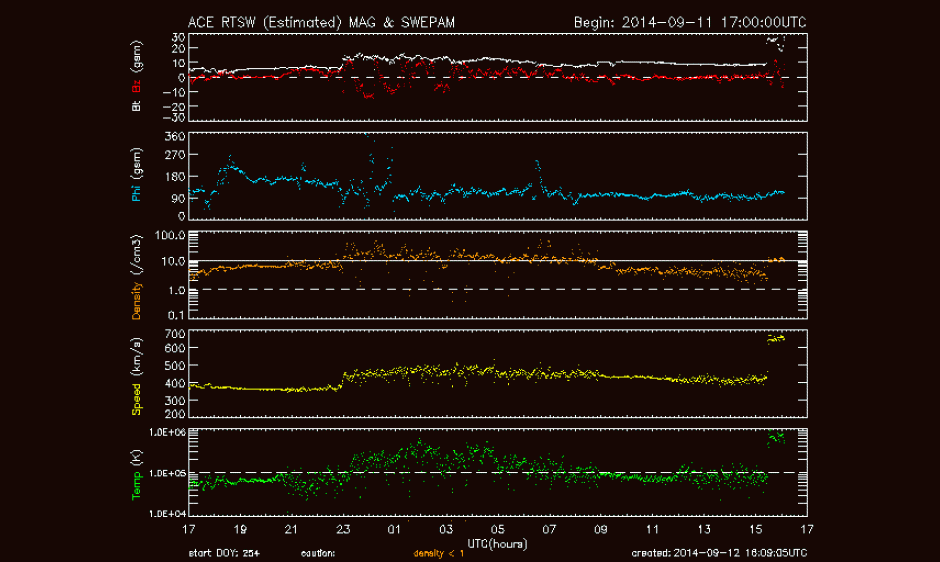
The second of the expected coronal mass ejections (CMEs) has arrived, and arrived in good agreement with the predicted arrival times (shown here in this ACE solar wind plot as the strong discontinuity near the end of the graph). As expected, an initial looks shows this CME is stronger than the first. More to come as this event plays out but the forecast for G2 (Moderate) storming for September 12th and G3 (Strong) storming on the 13th still looks to be reasonable. The solar radiation storm that is in progress as a result of the eruption on September 10th has increased with the passage of this shock, as it often does, and we currently sit just above the S2 (Moderate) threshold.